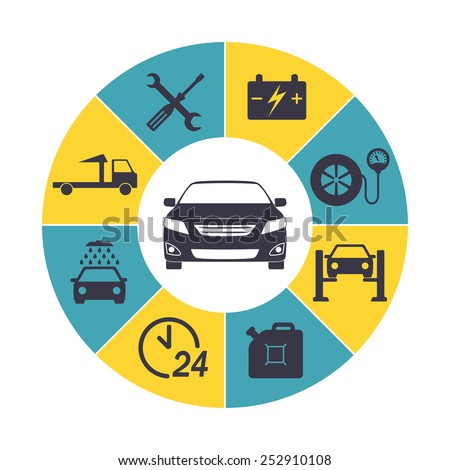Translating Your Vehicle'S Alert Lighting: Their True Ramifications
Translating Your Vehicle'S Alert Lighting: Their True Ramifications
Blog Article
Write-Up Created By-Lauritsen Corbett
When you're behind the wheel, those glowing warning lights on your control panel can be a little bit bewildering. Do you know what they're trying to tell you about your vehicle's wellness? Understanding the relevance of these lights is crucial for your security and the long life of your car. So, the next time one of those lights pops up, would not you intend to decode its message properly and take the needed actions to address it?
Common Warning Lighting and Interpretations
Identify usual caution lights in your vehicle and recognize their meanings to guarantee safe driving.
The most regular warning lights consist of the check engine light, which signals concerns with the engine or emissions system. If this light comes on, it's vital to have your vehicle checked without delay.
The oil pressure cautioning light indicates reduced oil pressure, calling for instant interest to prevent engine damages.
A flashing battery light might suggest a malfunctioning billing system, possibly leaving you stranded otherwise dealt with.
The tire pressure monitoring system (TPMS) light informs you to low tire stress, affecting lorry security and gas efficiency. Overlooking this might result in unsafe driving problems.
The ABS light suggests a problem with the anti-lock stopping system, endangering your capacity to quit quickly in emergencies.
Lastly, the coolant temperature level alerting light warns of engine overheating, which can lead to extreme damage if not solved quickly.
Comprehending these usual warning lights will certainly assist you attend to issues quickly and preserve secure driving conditions.
Importance of Prompt Interest
Recognizing the usual caution lights in your automobile is just the initial step; the relevance of quickly attending to these cautions can't be stressed sufficient to ensure your safety and security when driving.
When a caution light illuminates on your dashboard, it's your vehicle's method of connecting a possible problem that needs attention. Overlooking these warnings can result in extra severe problems later on, compromising your security and possibly costing you much more in repairs.
Prompt attention to cautioning lights can stop break downs and crashes. For example, a blinking check engine light can indicate a misfire that, if left unattended, could trigger damages to the catalytic converter. Addressing this quickly can conserve you from a pricey repair work.
Similarly, a brake system warning light could indicate reduced brake fluid or worn brake pads, critical elements for your security when driving.
Do It Yourself Troubleshooting Tips
If you discover a warning light on your control panel, there are a couple of do it yourself repairing pointers you can try before seeking specialist help.
The very first step is to consult your car's manual to comprehend what the specific warning light suggests. Sometimes the problem can be as easy as a loosened gas cap setting off the check engine light. Tightening the gas cap might solve the problem.
https://audi-ecu-tuning39516.tokka-blog.com/31443628/exists-any-type-of-doubt-on-your-component-concerning-the-result-of-auto-detailing-on-your-car-s-resale-worth is a reduced battery, which can cause different advising lights. Checking the battery links for deterioration and ensuring they're safe might deal with the issue.
If a caution light lingers, you can try resetting it by disconnecting the automobile's battery for a couple of mins and after that reconnecting it. Additionally, inspecting your vehicle's liquid degrees, such as oil, coolant, and brake liquid, can aid troubleshoot cautioning lights associated with these systems.
Read Significantly more , understanding your automobile's caution lights is vital for keeping your automobile running efficiently and securely. By quickly attending to these signals and recognizing what they mean, you can stay clear of pricey repairs and prospective failures.
Keep in mind to consult your auto's handbook for specific details on each alerting light and act accordingly to make sure a hassle-free driving experience.
Stay notified, remain risk-free when driving!
